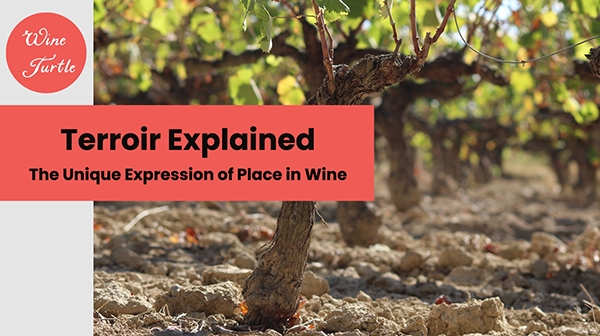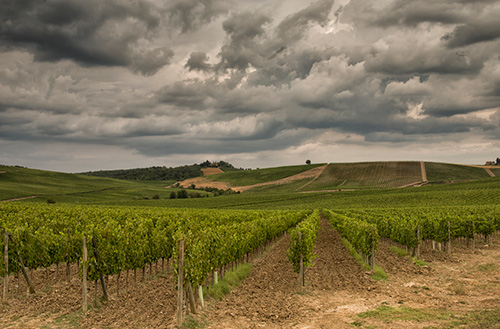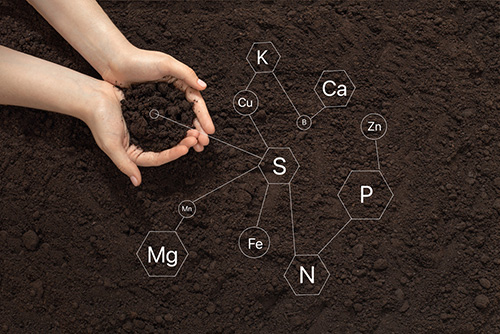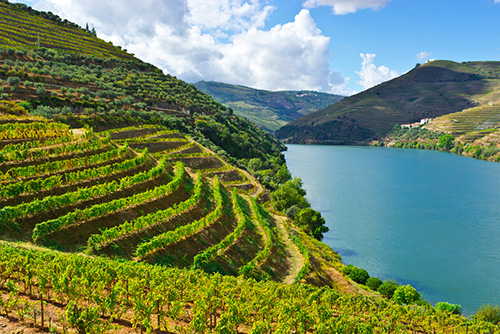Terroir Explained: The Unique Expression of Place in Wine

Terroir is a French term that refers to the unique set of environmental factors, including climate, geology, and topography, which influence a wine's character and quality.
It encompasses the soil composition, microclimate, and overall growing conditions, as well as the viticultural and winemaking practices employed in a specific region.
Terroir is a concept that recognizes that wines from different regions, even those made from the same grape variety, can exhibit distinct characteristics based on where they are grown.
In this guide, we'll dig a bit deeper into wine terroir to understand the effects it can have.
Factors Influencing Terroir
Terroir is a complex blend of a variety of influences that make a location unique. Let's find out what contributes to terroir.
Climate and Microclimate
Climate plays a crucial role in shaping the terroir of a wine region. Factors such as temperature, rainfall, sunlight hours, and humidity can all impact grape development and ripening.
Warmer climates typically produce wines with higher alcohol content, ripe fruit flavors, and softer acidity, while cooler climates yield wines with lower alcohol, vibrant acidity, and more delicate fruit flavors.
Microclimates, which are localized weather conditions within a vineyard area, can also significantly affect grape growth, ripeness, and overall wine quality.
Napa Valley is one such famous wine growing region that has a diverse microclimate. This is due to its topography and proximity to the cooling influence of the Pacific Ocean.
The valley's various AVAs (American Viticultural Areas) produce a wide range of wine styles, from the cooler Carneros region, ideal for Chardonnay and Pinot Noir, to the warmer St. Helena and Calistoga, known for Cabernet Sauvignon and Zinfandel.

Geology and Soil Composition
Soil composition influences the terroir by affecting water and nutrient availability to the vines, as well as drainage, nutrient availability, temperature regulation and root development.
Here are some common soil types and their effects on wine grapes:

Topography and Aspect
Topography, or the physical features of a landscape, can also shape terroir by affecting sunlight exposure, temperature, and drainage.
Vineyard elevation, slope, and aspect (the direction the vineyard faces) can all impact grape ripening and quality.
For instance, vineyards at higher elevations often experience cooler temperatures, which can result in longer ripening periods, allowing for the development of complex flavors and aromas.
Similarly, south-facing slopes in the Northern Hemisphere receive more sunlight and warmth, promoting ripening and yielding riper, more concentrated flavors.

Wine Tastings That Explore the Effects of Terroir
So you’re excited to learn more about terroir? These fun comparative wine tastings are great for highlighting the effects terroir can have on a wine.
Develop a deeper understanding of the influence of terroir on wine and appreciate the unique characteristics that different regions and vineyards bring to their wines.
My favorite way to do this is to get together with some friends with each of you bringing a bottle or two that adheres to the requirements.
It makes for a fun and interesting discussion when you compare your notes.
Regional Comparison Tasting
Select wines made from the same grape variety but grown in different regions, ideally known for their distinct terroir.
Taste each wine and compare their characteristics, focusing on the differences in aroma, flavor, acidity, body, and texture. This exercise will help you appreciate how terroir influences the wine's profile.
Vertical Tasting from a Single Producer
Choose a single producer known for making wines that express their terroir and select several vintages of their wine.
A vertical tasting will allow you to understand how climate variations in different years can impact the expression of terroir in a specific vineyard or region.
Soil and Vineyard Site Exploration
If possible, visit local wineries or vineyards and ask for a guided tour that highlights different soil types and vineyard sites within the property.
Tasting wines from these distinct sites can provide insights into how terroir influences the wines produced in each area.
Old World vs. New World Tasting
Select wines from both Old World and New World regions made from the same grape variety. Old World wines typically exhibit more subtle expressions of terroir, while New World wines often showcase bolder fruit characteristics.
Comparing these wines side by side can help you understand how terroir is expressed differently depending on the winemaking tradition and region.
Single-Variety, Multi-Producer Tasting
Choose a grape variety that is known for reflecting terroir, such as Pinot Noir or Riesling, and select wines from multiple producers within a single region.
Tasting wines made by different winemakers with varying winemaking styles can help you identify the common thread of terroir in the region.
Blind Tasting
Organize a blind tasting with friends, focusing on wines from regions known for their distinct terroir. Without knowing the origin of each wine, participants can concentrate on identifying the unique characteristics imparted by the terroir.
Revealing the wine's origins after the tasting can lead to engaging discussions about the influence of terroir on each wine.
Terroir is a complex concept that reflects the unique combination of environmental, cultural, and human factors that shape a wine's character and quality.
Understanding and appreciating terroir allows us to recognize and celebrate the diversity and individuality of wines from around the world.
